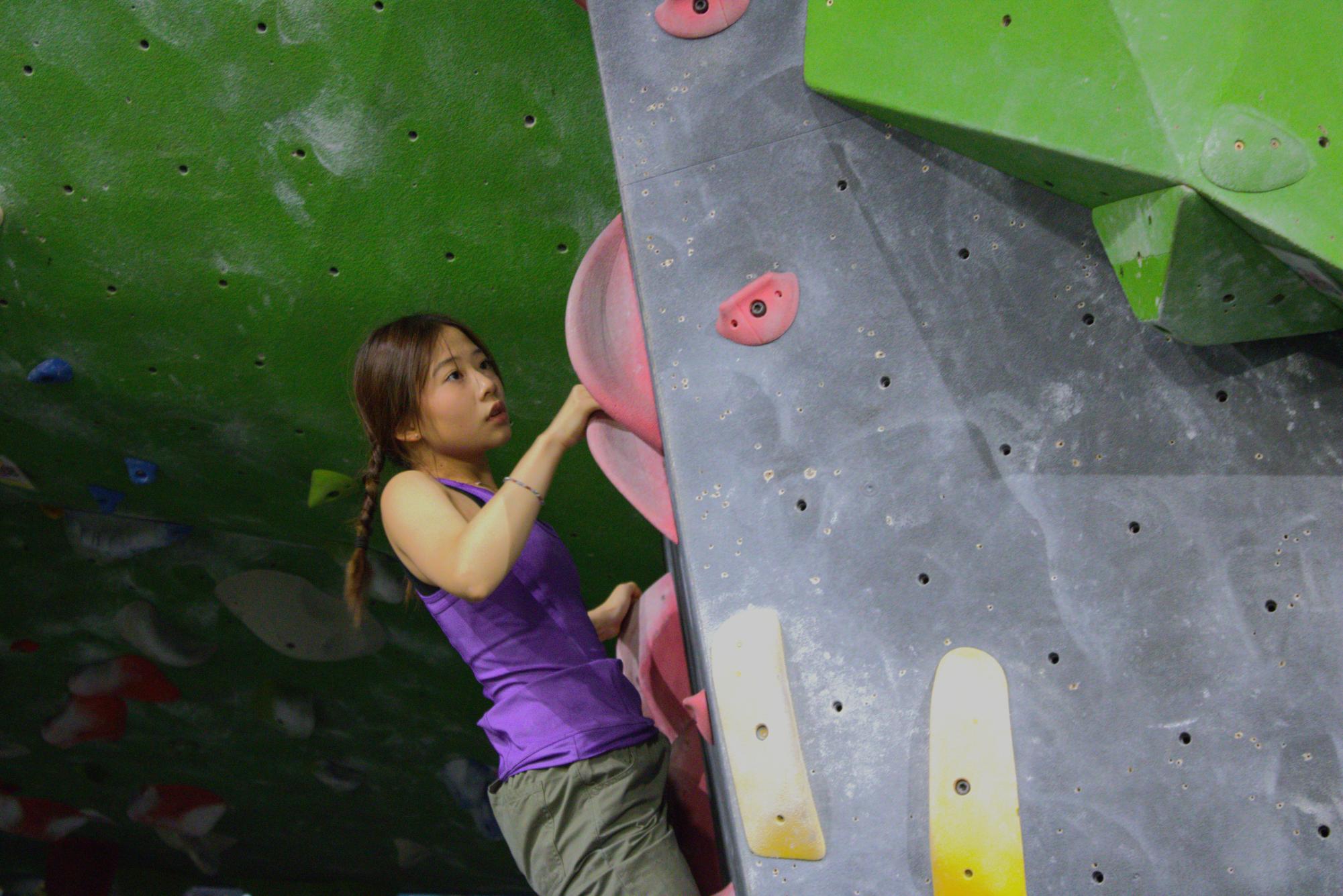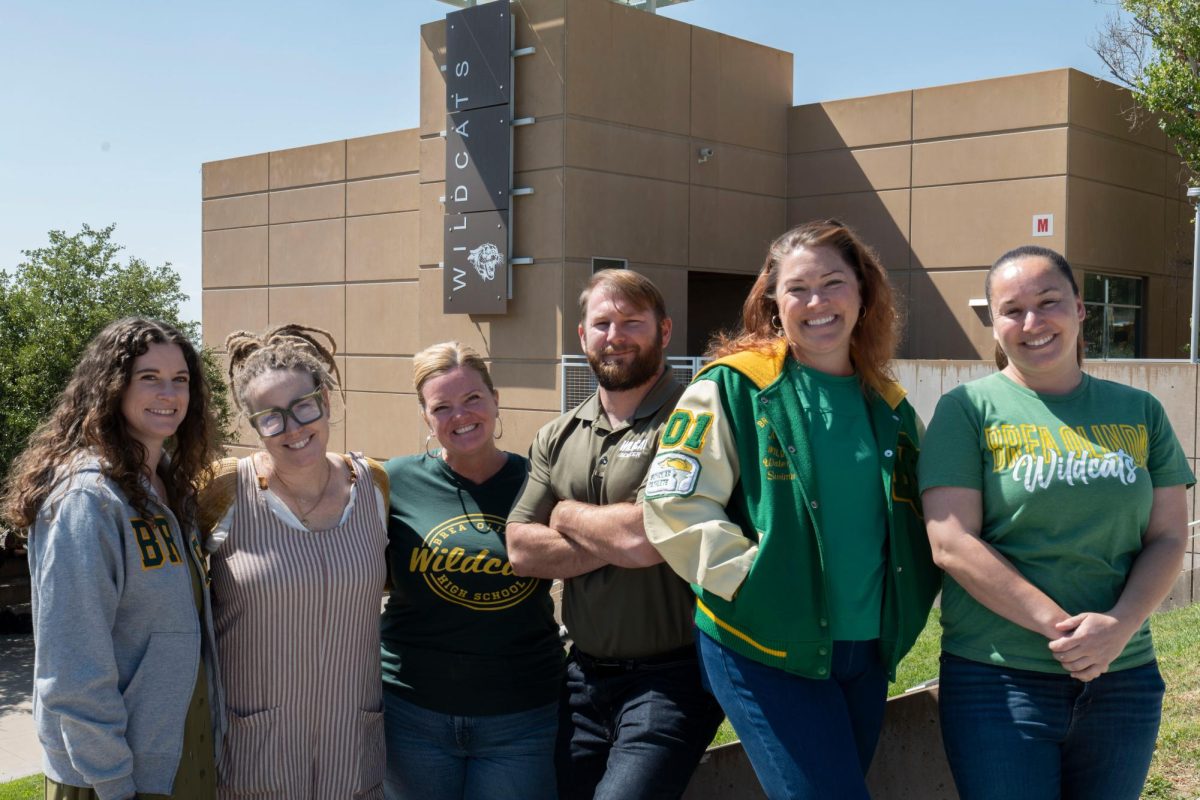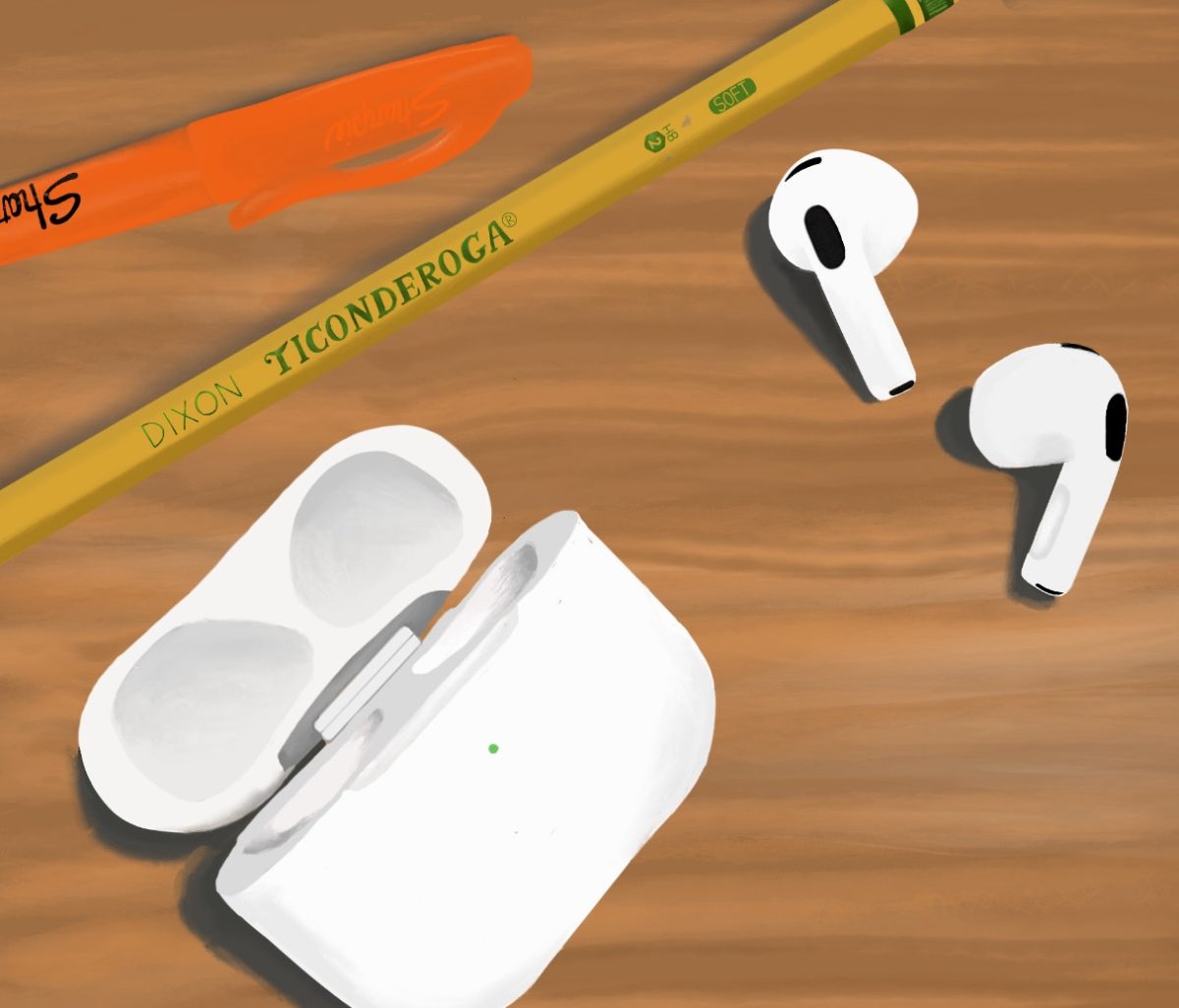I hugged my chest as I sat on the edge of cushioned crash pads, watching climbers scale a 15-foot wall by gripping handholds the size of bottle caps. Chalk dust from clapping hands drifted through the gym, leaving a fine white layer on the mats, walls, and skin.
I was at the Sender One climbing center in Santa Ana as an observer, not as a participant; a reluctant guest of my father, who was there to test the climbing shoes he had designed for professional athletes.
Because of his job, I grew up surrounded by the sounds and sights of bouldering: the “brushing” of the holds (a tactic used to restore a climber’s grip), the thuds of climbers falling onto the plump crash pads, the creaking of ropes, the clicks of carabiners, and the chorus of encouragement (and frustration). These were the background noises of my childhood.
At the time, I didn’t really understand the din and activity; I was just captivated by people launching themselves up the walls, then falling, then climbing again. Their process of solving puzzles with their bodies was fascinating.
Although my father encouraged me to climb — to feel the rock, to trust my balance, and to learn the rhythms of vertical movement — I thought the sport favored the tall and strong and athletically gifted.
I, on the other hand, stand 4-feet-11-inches. Believing my height would always be a disadvantage in sport that involves, well, heights, I watched from the edge of the mat, convinced I wasn’t “built” for the bouldering.
Still, something about bouldering intrigued me. Even as I told myself I wasn’t meant for it, I was quietly drawn to the routes, the challenges, the idea that maybe, there actually was a place for someone like me on the wall.
Bouldering — named for the act of climbing small rock formations — is a form of climbing on shorter walls (usually around 15 feet) without ropes or harnesses. Instead, climbers rely on chalk, their limbs, and thick pads to cushion their falls (which, I quickly discovered, were inevitable, and frequent).
This sport can take place both indoors and outdoors. Outdoor bouldering occurs on natural rock formations and typically requires crash pads, spotters (people who help guide a climber’s fall), and awareness of the natural environment.
Indoor bouldering, on the other hand, happens in climbing gyms that feature artificial holds, angular walls, and padded floors. Originally, many climbers used these gyms to train for outdoor climbs, but indoor bouldering has become a sport of its own for its convenience and accessibility.
In any climbing gym, the essential principles of climbing don’t change: climbers tackle routes, called “problems” or “projects,” which involve problem-solving, technique, and strength, in attempt to finish a climb by only using holds of a single color to reach the the last hold (the “finish”) with both hands.
The difficulty of these projects are graded using the V-scale (the “v” is short for Vermin, the nickname of John “Vermin” Sherman who created the scale), with V0 the easiest, and V17, the most challenging. The difference between the two is massive: V0s are beginner-friendly climbs with large and easy holds, while only seven climbers have successfully completed a V17 route. Though graded differently, each route challenges everyone differently, encouraging each climber to discover their own style.
Discovering my style started the day I found, on YouTube, a 4.65-second-long clip of U.S. national team climber Sam Watson winning the final of a World Cup in Indonesia. The few seconds of Watson speed climbing against opponent Veddriq Leonardo ignited an interest in a sport I’d only observed from afar.
Inspired, I walked into the Santa Ana gym with my dad, carrying his old chalk bag.
I squeezed into a pair of climbing shoes my dad intentionally designed two sizes too small, a common strategy used by climbers for better foot precision and control. Most climbing shoes are aggressively downturned, curving like a banana, to help hook onto the steep holds.

Already, my toes were throbbing in protest.
My first climb at the gym was a V0 problem. Hands “chalked up” in a layer of magnesium carbonate powder to improve friction and grip, I reached for the first plastic, textured hold and pulled myself up. My foot searched for something to grip onto, finally landing on a yellow “pocket.”
Pockets (like the one I attempted to cling onto) are small indentations intended as toe hooks (wedging for the top of the toes). Holds (like the ones I was frantically grasping for) come in all kinds of odd shapes, each demanding a different technique. There are also edges — thin strips of rough plastic rock to rest the very end of the shoe that require precise toe placement and balance. Then there are the smears that use the friction between the shoe and the textured wall’s surface instead of an actual hold.
Knowing the types of grips was one thing, but trusting my foot on them was another.
My fingers reached for the next hold.
Too far.
Not enough height.
My foot slipped.
A short fall, a loud thud.
I tried again, determined to conquer the route.
Bouldering, I quickly learned, requires technique and strategy over brute strength. Experienced climbers use tactics like angling the hips, precise foot placement, and “flagging out” a leg to counterbalance, to move efficiently.
But I hadn’t mastered any of that yet.
Hold by hold, I climbed upward, this time keeping my hips closer to the wall, smearing my foot against the angles where footholds were scarce. Every move became more deliberate.
I began to recognize which holds were easier: a jug (a large, easy-to-grip hold) is a climber’s favorite, while a crimp (a tiny ledge you grab with just fingertips) is a climber’s nemesis.
After about 30 seconds of slow, pressure-filled ascent up the 15-foot wall, I finally matched both hands onto the last yellow jug — the “top” hold — and exhaled deeply, exhausted, and relieved.
From up there, the gym was transformed. The walls looked smaller and less intimidating. I could appreciate the colors of the holds, like vibrant puzzles ready to be solved. Even the noises from the gym faded a little — so familiar, yet so different — like I’d entered a whole new world.
Perched atop the wall, I realized that bouldering isn’t just for the tall, physically strong, and naturally athletic — bouldering is about using cunning, technique, creativity, and, most of all, the desire to try. (And try again.)
The wall doesn’t demand a specific body type. Whether 6-feet-5-inches or not-quite-5-feet, climbers can conquer a wall in different ways — some power through moves using their forearms; some use their long reach; some use agility to jumps from hold to hold; and others (like me) use tight footwork, flexibility, and dexterity.
Even now, after a year of climbing, I still struggle with the easiest routes. My hands still slip off the holds, I strategize wrong, and I fall again and again. But gradually, I’ve learned to accommodate and improve my techniques. It wasn’t strength (or a sudden growth spurt) that got me here — it was body awareness, problem solving, resilience.
That’s the beauty of bouldering. No matter anyone’s size, strength, or experience, bouldering has a space for growth, and belonging.










